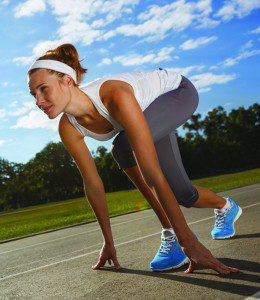 The Road Runners Club of America wants to remind the running community about the importance of following our hot weather running tips. Running in the heat of summer can be dangerous if proper precautions and preparations are not followed.
The Road Runners Club of America wants to remind the running community about the importance of following our hot weather running tips. Running in the heat of summer can be dangerous if proper precautions and preparations are not followed.
. Avoid dehydration! You can lose between 6 and 12 oz. of fluid for every 20 minutes of running. Therefore it is important to pre-hydrate (10–15 oz. of fluid 10 to 15 minutes prior to running) and drink fluids every 20–30 minutes along your running route. To determine if you are hydrating properly, weigh yourself before and after running. You should have drunk one pint of fluid for every pound you’re missing. Indications that you are running while dehydrated are a persistent elevated pulse after finishing your run and dark yellow urine. Keep in mind that thirst is not an adequate indicator of dehydration.
. Avoid running outside if the heat is above 98.6 degrees and the humidity is above 70-80%. While running, the body temperature is regulated by the process of sweat evaporating off of the skin. If the humidity in the air is so high that it prevents the process of evaporation of sweat from the skin, you can quickly overheat and literally cook your insides from an elevated body temperature. Check your local weather and humidity level.
. When running, if you become dizzy, nauseated, have the chills, or cease to sweat…STOP RUNNING, find shade, and drink water or a fluid replacement drink. If you do not feel better, get help. Heatstroke occurs when the body fails to regulate its own temperature, and the body temperature continues to rise. Symptoms of heatstroke include mental changes (such as confusion, delirium, or unconsciousness) and skin that is red, hot, and dry, even under the armpits. Heatstroke is a life-threatening medical emergency, requiring emergency medical treatment.
. Run in the shade whenever possible and avoid direct sunlight and blacktop. When you are going to be exposed to the intense summer rays of the sun, apply at least 15 SPF sunscreen and wear protective eyewear that filters out UVA and UVB rays. Consider wearing a visor that will shade your eyes and skin but will allow heat to transfer off the top of your head.
. If you have heart or respiratory problems or you are on any medications, consult your doctor about running in the heat. In some cases it may be in your best interests to run indoors. If you have a history of heatstroke/illness, run with extreme caution.
. Children should run in the morning or late afternoon hours but should avoid the peak heat of the day to prevent heat related illnesses. It is especially important to keep children hydrated while running and playing outdoors in the heat.
. Do wear light colored breathable clothing. Do not wear long sleeves or long pants or sweat suits. Purposefully running in sweat suits on hot days to lose water weight is dangerous!
. Plan your route so you can refill water bottles or find drinking fountains. City parks, local merchants, and restaurants are all good points to incorporate on your route during hot weather running. Be sure to tell someone where you are running, how long you think you will gone, and carry identification.
. Stay hydrated, cool, and safe this summer!
Source: www.rrca.org









